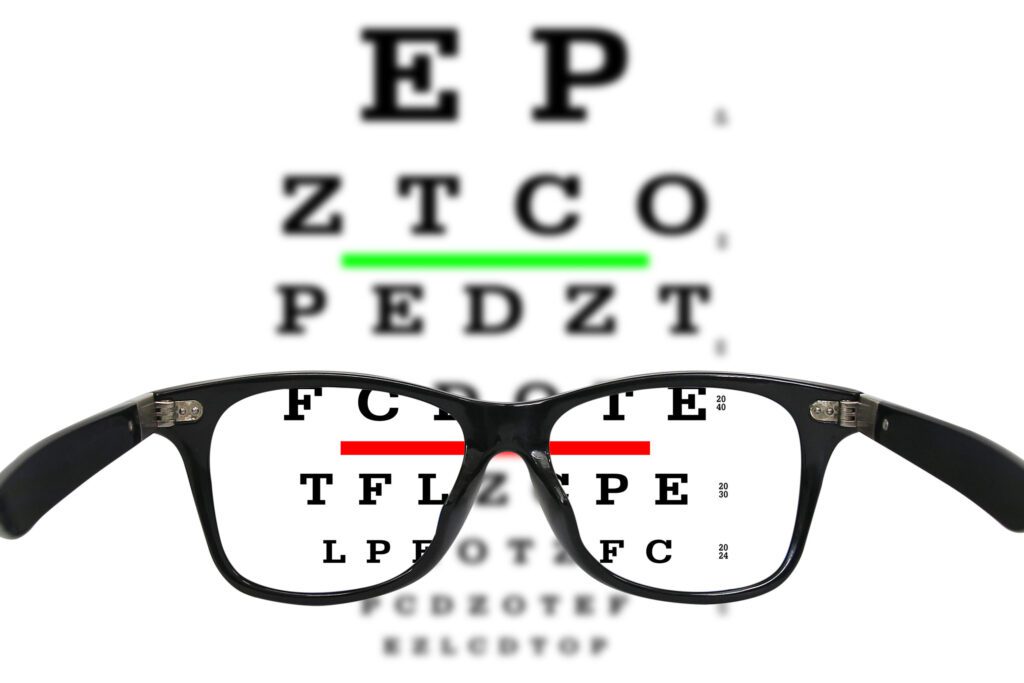I am not exaggerating when I tell you I get this question ALL of the time! I love when my patients are curious and have questions for me during the exam, so I thought I’d take some time today to explain exactly what 20/20 means and why it is so important.

What Does 20/20 Vision Mean?
First of all, what exactly does it mean? 20/20 is what I call “normal vision” measured at 20 feet. This means you can see clearly at 20 feet what should typically be seen. If the denominator is a larger number (like 20/60), this means that this person must be as close as 20 feet to see clearly what a “normal” person could see at 60 feet. Clear as mud, right? Basically, the higher the bottom number is, the worse the vision. Your vision can be better than 20/20! So, if the number on the bottom is smaller, like 20/15, you can see at 20 feet what someone else has to be 15 feet from to see clearly.
Is 20/20 Vision Perfect?
Does 20/20 mean perfect vision? Not necessarily. There are many other things that factor in such as peripheral vison, depth perception, and ability to see colors. Only about 35% of people have 20/20 vision without glasses or contacts. Thankfully, 75% of people achieve 20/20 vision with the help of contacts or glasses. In most states, you must have 20/40 vision at least to have an unrestricted driver’s license. I also get the “what is legally blind” question a lot. This mean that vision with contacts or glasses is 20/200 or worse. So, even if your vision is horrible without your glasses, you are not legally blind if you can see well when you wear them.
Why Can’t I See 2020?
So, why might someone not have 20/20 vision? There can be so many reasons. If you are farsighted, nearsighted, or have astigmatism, you may not be able to see the 20/20 line on our eye chart. But, as long as you are able to see it with glasses, all is well. In cases where a patient is struggling with an eye disease, they may not be able to see 20/20 even with glasses. The most common causes I see for this are dry eye, cataracts, and macular degeneration.
To test for 20/20, we use what is called a Snellen chart. We check first one eye at a time and have the patient read letters in a row that get smaller and smaller until we eventually reach the 20/20 line or the patient isn’t able to distinguish the letters anymore. We also have picture charts for young children who do not know their letters yet.
I hope this helps some of you to understand what 20/20 vision means and why it is so important! If you are concerned that you may not have 20/20 vision, schedule an exam with your optometrist so they can determine if you need glasses or contacts.